Diman gets grant to buy 10 new heat pumps: How HVAC students are training for the future.
FALL RIVER — A dozen students were busily bending copper tubing, working together as they measured and mounted it to a wall, each one contributing in their own small way to a cleaner climate.
The students in Diman Regional Vocational Technical High School’s heating, cooling, air conditioning and refrigeration shop were learning how to install heat pumps, climate control devices of amazing efficiency that promise a better way to heat and cool homes in Greater Fall River.
The school has received 10 different models of heat pump to practice on, courtesy of a grant from Liberty Utilities and National Grid. Each unit, said Superintendent Brian Bentley, runs around $7,000 to $8,000.
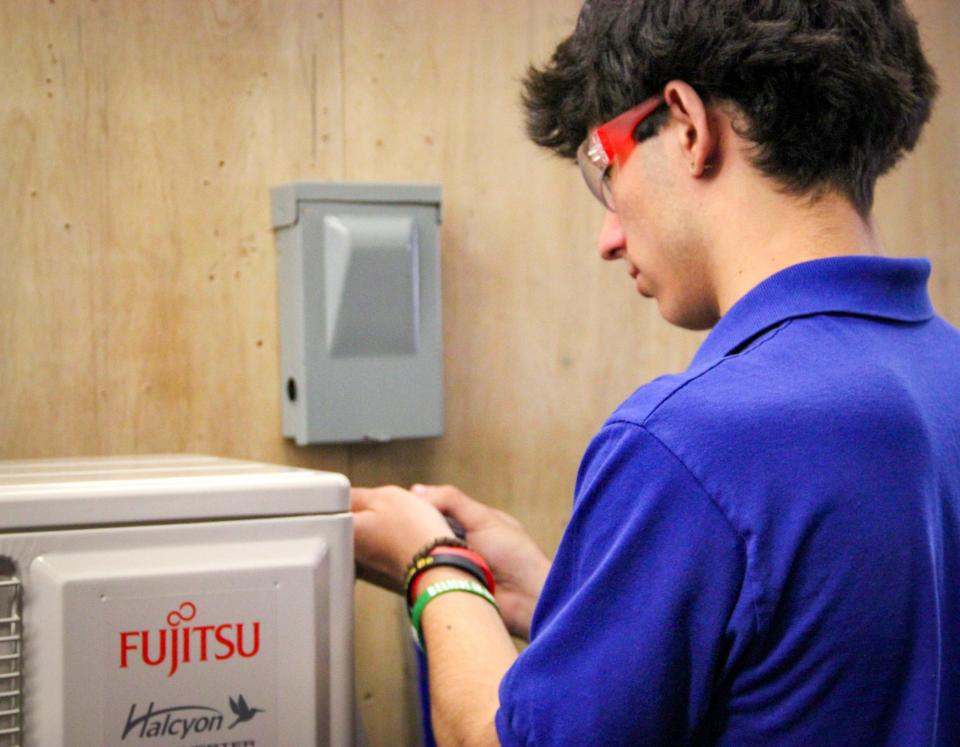
“They have fully funded this entire project for us here. The students are getting great training on it,” Bentley said. “Without their funding, we would’ve had to find the funding within our budget in order to do this.
“What you have here is quite a bit of money tied up.”
From 'This Old House' to Fall River: Heating company ready to open new waterfront offices
How does a heat pump work?
Homes in Greater Fall River, and across New England, are most commonly heated with oil or natural gas — fuels whose supply is expensive, limited, and a major factor in climate change.
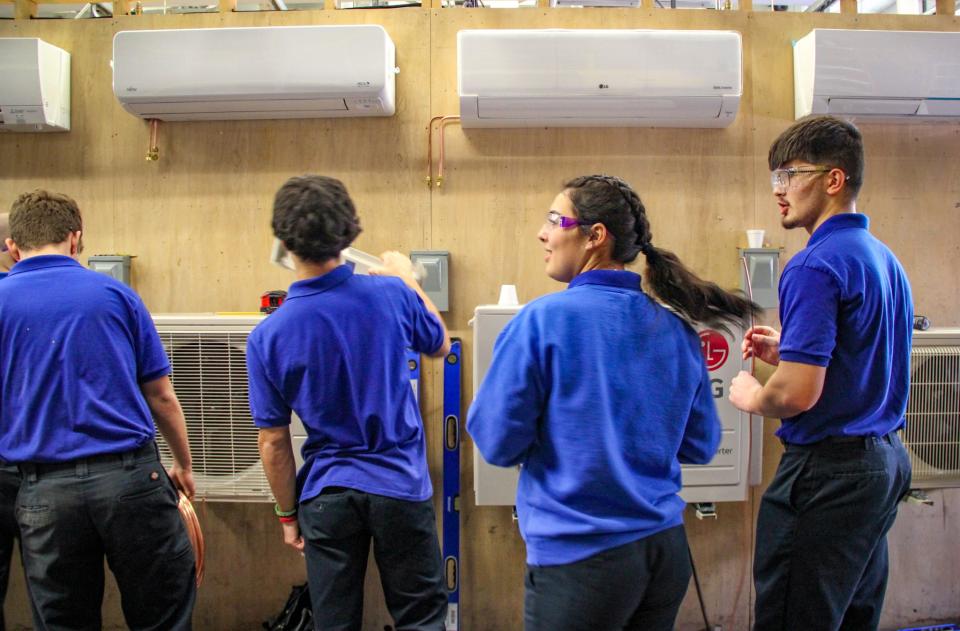
Heat pumps run on electricity — and instead of generating heat, they transfer it from outside the home to the inside, making them much more efficient than furnaces.
“For us, we consider 30 degrees to be cold outside. To the refrigerant that’s inside these systems, that’s considered to be warm,” said William Harris, Diman’s HVACR department head. “They can extract the heat out of the air in 30 degrees. They will take the heat from outside and pump it inside.
“It’s like an air conditioning system that runs backwards,” he added.
In the hot months, they work the other way, pumping warm air inside the house back outside, leaving the room cooler.
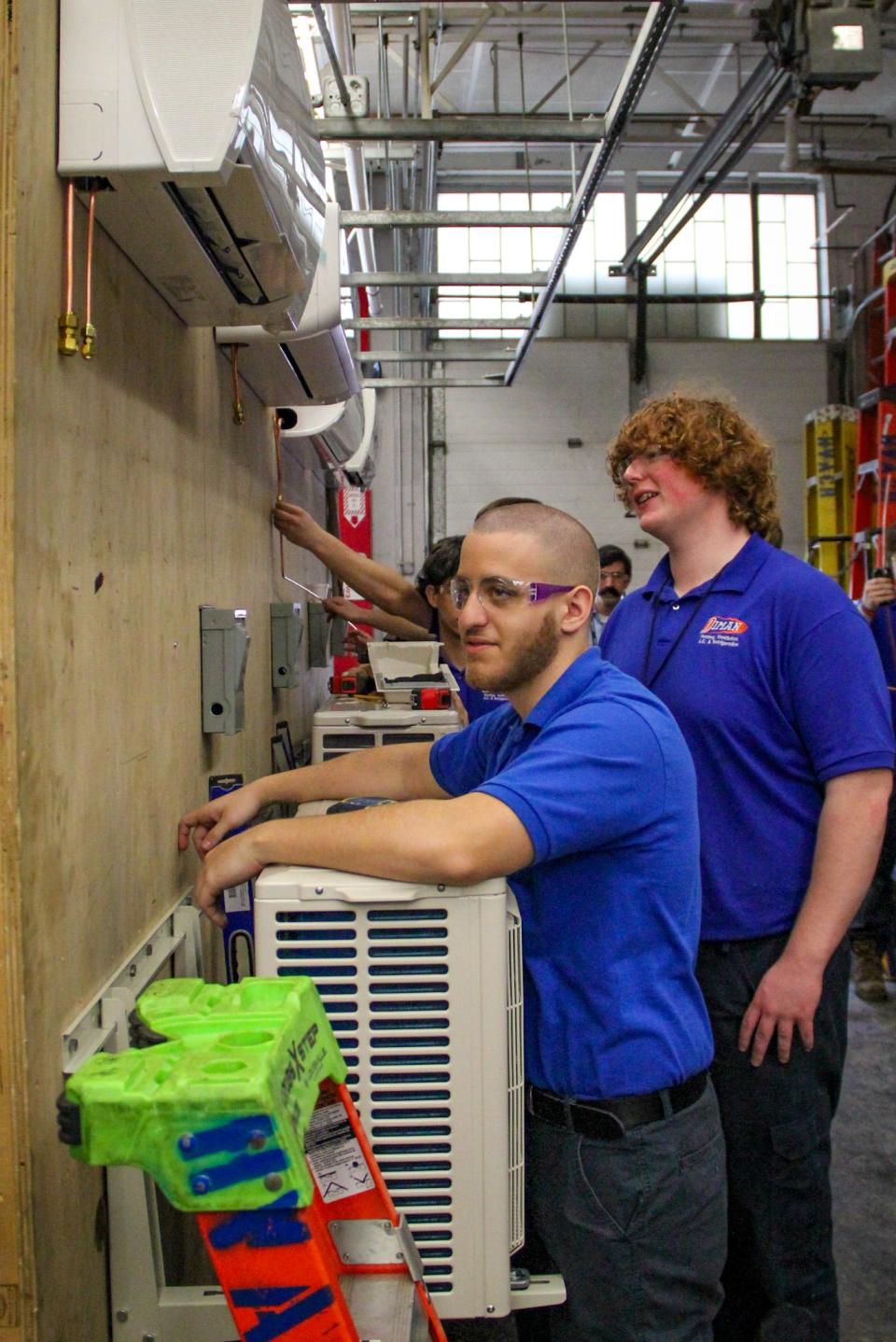
It seems counterintuitive on frigid New England days, but even in extreme low temperatures, a heat pump can still extract heat out of that cold air and keep a house toasty warm, he said.
“These are cold climate ones," Harris said. “They’ll work down to negative-15 — effective at negative-15, with 100% efficiency at negative-5.”
A new Diman is coming: Construction on the new Diman Voc-Tech in Fall River was pushed back. Here's why.
How to get a heat pump, and what rebates are available
Through the Mass Save program, Liberty Utilities and National Grid offer homeowners incentives to install heat pumps that replace or supplement their old fossil-fuel-based heating systems.
Customers can get up to $16,000 in rebates and federal tax credits to install an air source or air-to-water heat pump; those draw warmth from the outside air to heat the house. Mass Save offers up to $25,000 to install a ground-source heat pump, which draws its warmth from underground.
MassSave: Learn more about heat pump rebates and incentives
Wyatt L’Etoile, an HVACR instructor at Diman, said the first step is to have Mass Save assess your house in terms of energy efficiency.
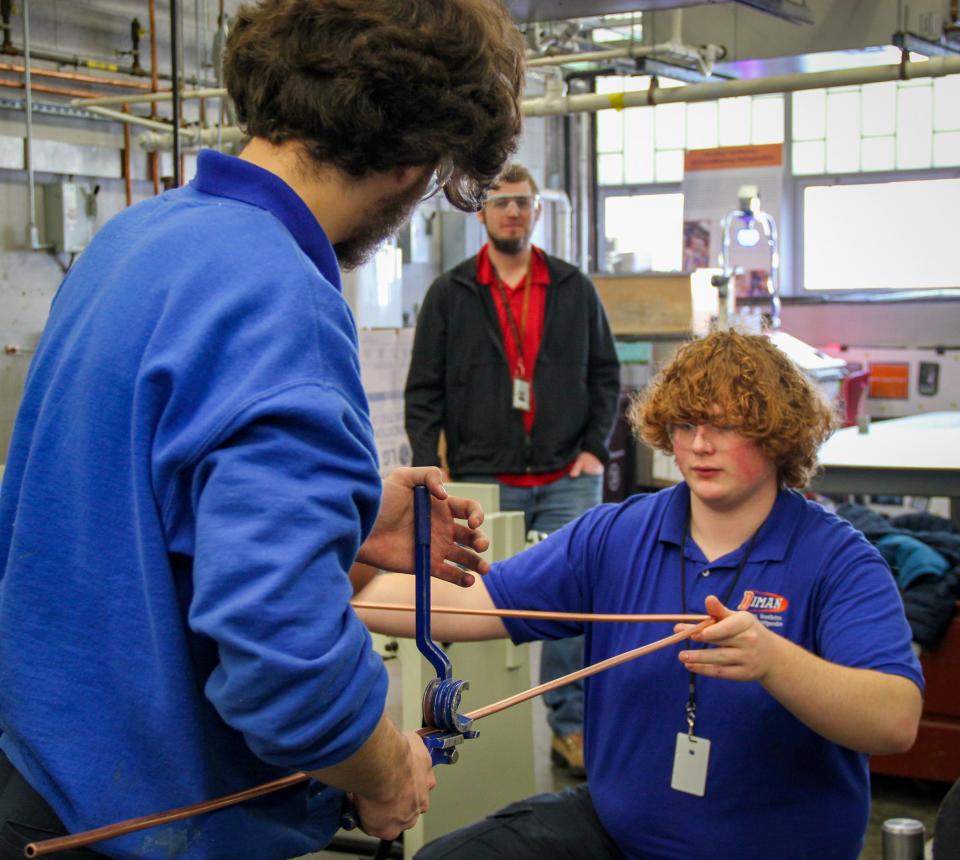
“Most of the time they’ll suggest units like this to supplement or replace your heating system because of the large efficiency that these have,” he said. Once those rebates are factored in, he said, “most of the time, they almost pay for themselves. It’s really awesome.”
“Heat pumps are an important technology that will require greater customer adoption in order for Massachusetts to achieve greenhouse gas goals," said Stephanie Terach, manager of energy efficiency and customer solutions at Liberty. “We are proud that the students of Diman will have the opportunity to receive training on this technology and contribute to the clean energy workforce.”
Diman HVACR students are in a growing field
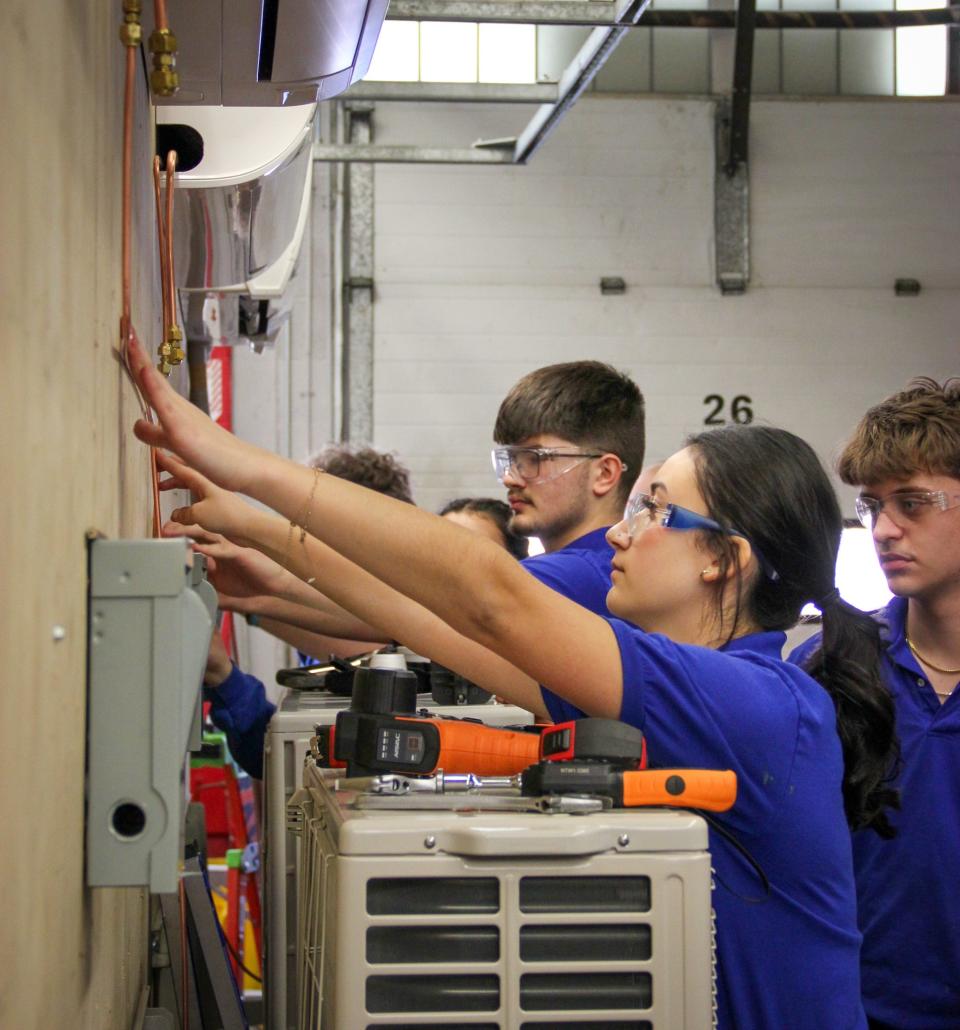
Bentley said not long ago, Diman’s HVACR department was a small shop. In recent years, it has grown significantly, to the point where the shop has had to turn away kids interested in learning the HVACR trade.
That may be at least in part because jobs in the field are well-paid and stable, with emerging technologies like this to keep these kids steadily employed when they graduate and far beyond.
The heat pumps grant allowed the school to buy 10 different models, so students can learn a variety of installation and repair methods. During a class, the students mounted the wall units — where the heat enters the room — and connected them to the condenser units.
Instructor Gabriel Teixeira said the practice they’ll get with these units make a huge difference in their training.
“These things are meant to be installed once. They install them four or six times per year,” Teixeira said.
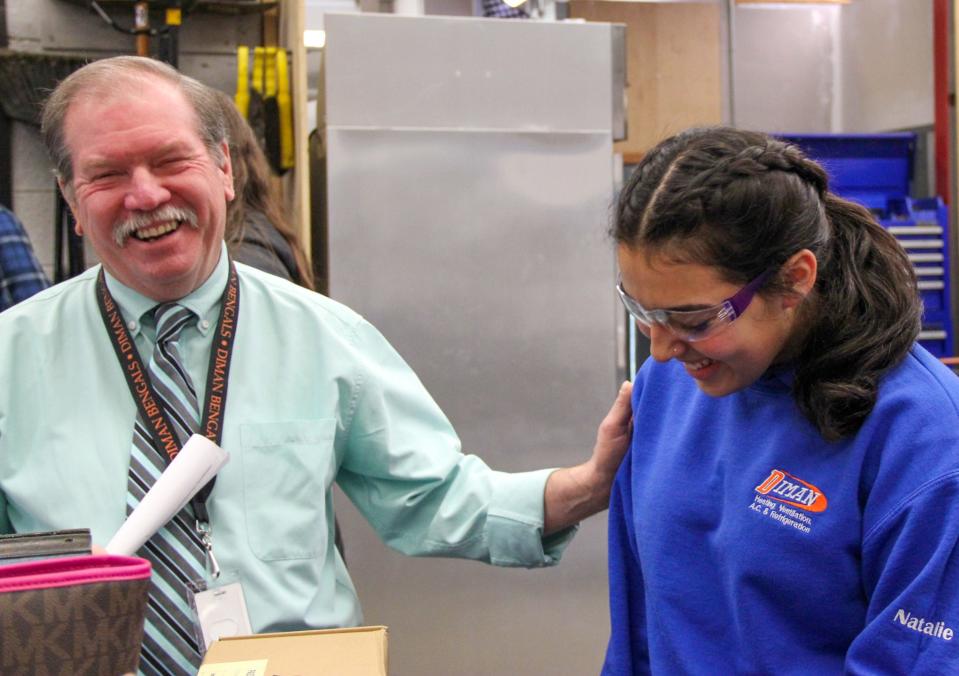
He added that training not only gives the students mechanical knowledge but self-confidence.
“It’s really impactful for the students to get nice equipment to work on. They’re so proud when they’re done. They ask to take their phones out and take pictures.”
Terach, a Diman alumna herself who helped obtain the grant money for the pumps, said she was thrilled that Liberty was able to play a role in their education.
“The greatest thing we can do is prepare students by investing in the tools and technologies they will need to join the clean energy workforce," she said. “We are proud to support these students in their pursuit of clean energy jobs.”
Dan Medeiros can be reached at dmedeiros@heraldnews.com. Support local journalism by purchasing a digital or print subscription to The Herald News today.
This article originally appeared on The Herald News: Diman HVAC students obtain heat pumps; homeowner incentives available

